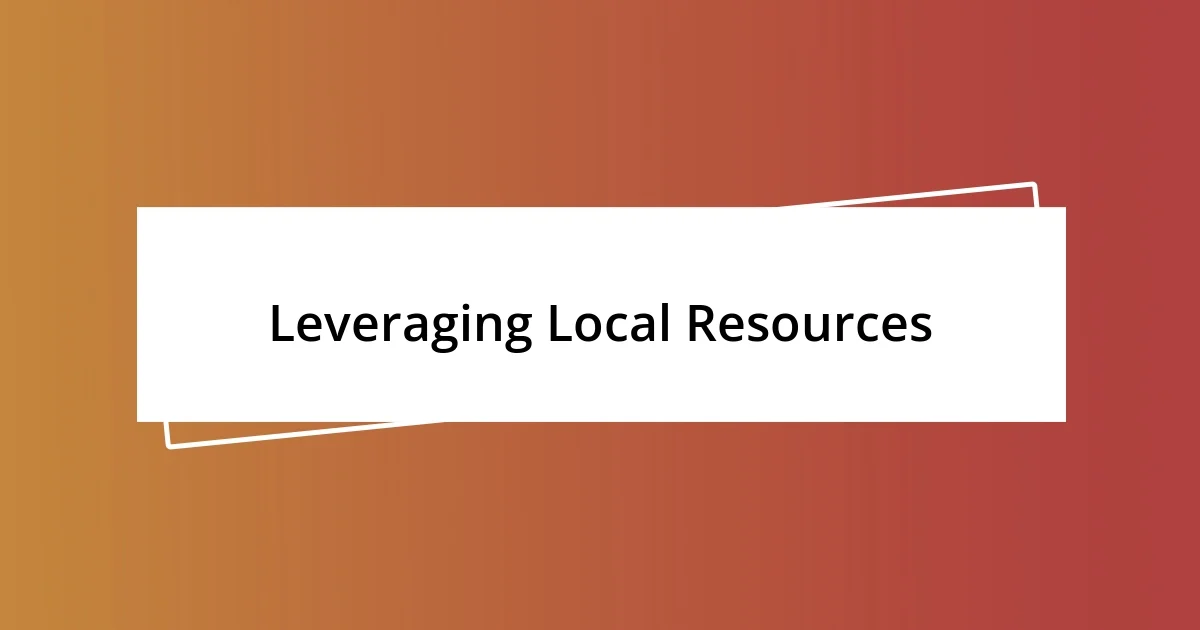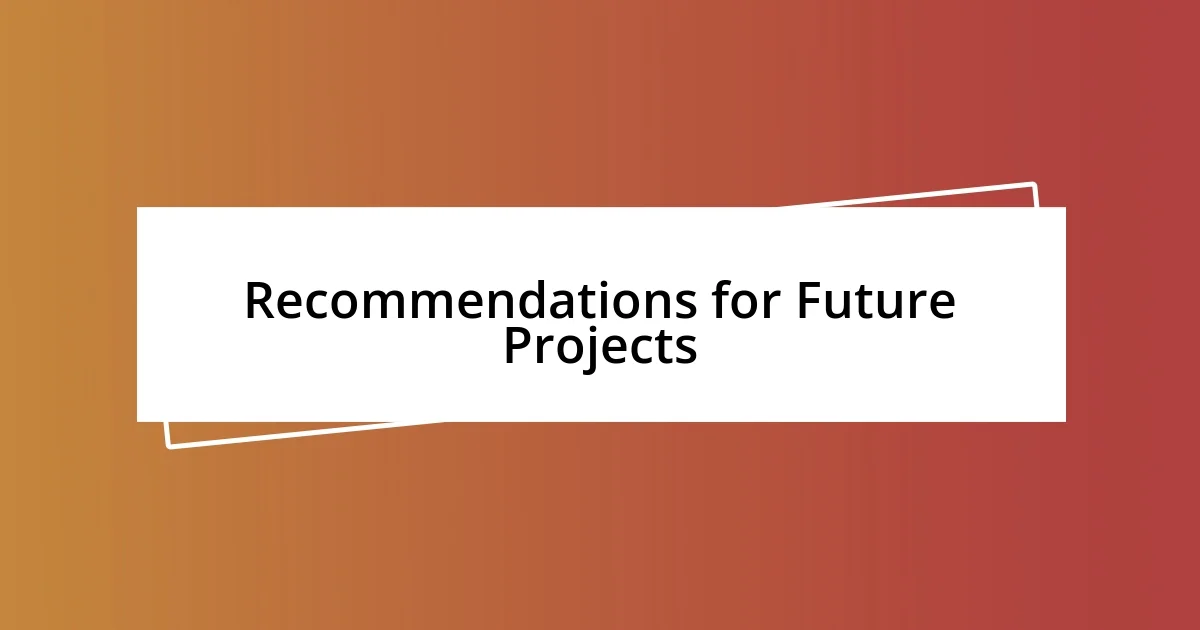Key takeaways:
- Urban health initiatives effectively combine medical care with environmental, nutritional, and mental health considerations to improve community well-being.
- Engaging community voices through workshops, partnerships, and feedback mechanisms leads to more relevant health solutions and creates a sense of ownership.
- Success measurement should include both quantitative data and qualitative stories to capture community impact and foster trust in health initiatives.

Understanding Urban Health Initiatives
Urban health initiatives are multifaceted programs designed to address the unique health challenges faced by city dwellers. When I first got involved in community health efforts, I was struck by how these initiatives don’t just focus on medical care; they also encompass issues like nutrition, mental health, and access to clean air and water. It’s fascinating to see how addressing the environment can lead to significant health improvements.
One initiative that left a lasting impression on me aimed to promote active living in an urban neighborhood. The organizers transformed vacant lots into vibrant public parks with exercise equipment and walking paths. I remember the sound of laughter and chatter as families gathered outdoors. It made me wonder, how often do we overlook the importance of our environment in shaping our health?
Additionally, these programs often emphasize collaboration among various sectors, from local governments to non-profits and community members. I recall a community meeting where diverse voices came together to brainstorm solutions. The energy was palpable, and I realized that real change comes when everyone feels invested in the outcome. Isn’t it incredible how a united community effort can spark transformation in urban health?

Identifying Effective Strategies
Identifying effective strategies in urban health initiatives requires understanding the community’s specific needs. Reflecting on my experiences, I found that surveying residents can provide invaluable insights. When we conducted a simple questionnaire in a low-income neighborhood, the results revealed vital health challenges that we weren’t originally aware of, such as concerns about food accessibility. It was eye-opening for all of us involved.
Another crucial strategy is fostering partnerships. In one project I participated in, we collaborated with local businesses to provide healthier food options. I distinctly remember the day we launched a community garden, which not only improved access to fresh produce but also brought people together. That day was filled with laughter and shared goals, illustrating how partnerships can enrich urban health efforts.
Lastly, leveraging technology can tremendously enhance outreach and engagement. I’ve seen how utilizing social media platforms can spread awareness about health initiatives quickly. During a recent campaign, we created targeted posts that reached thousands of residents within days. This immediate feedback loop allowed us to adjust our strategies in real-time, ultimately leading to higher participation rates. It’s a game changer!
| Strategy | Description |
|---|---|
| Community Surveys | Gathering insights on local health issues directly from residents. |
| Partnerships | Collaborating with businesses and organizations to improve resource accessibility. |
| Technology | Using social media to raise awareness and engage the community effectively. |

Community Engagement and Participation
One of the most impactful aspects of urban health initiatives has been the emphasis on community engagement and active participation. I recall a project where we invited residents to participate in designing local health programs. The moment we opened the floor to ideas, I watched as shy voices blossomed into confident discussions. People spoke passionately about their experiences and the changes they wanted to see. It was a beautiful reminder that when community members are involved, their insights lead to more effective and relevant solutions.
Building connections within the community isn’t just beneficial; it’s essential. Here are a few notable ways we can enhance community engagement:
-
Workshops and Events: Organizing interactive workshops allowed residents to learn more about health issues while sharing their ideas in a casual setting. Seeing community members light up while discussing their passions was inspiring.
-
Community Champions: Identifying and empowering local leaders can help mobilize others. I remember a resident who took charge of a health awareness campaign and fostered a sense of excitement that drew in more participants.
-
Feedback Mechanisms: Actively inviting and acting on feedback can create a loop of continuous improvement. This approach not only demonstrates that community voices are heard but also fosters trust in health initiatives.
In my view, these engagement strategies are not just formalities; they cultivate a sense of belonging and ownership, essential for long-lasting change in urban health initiatives.

Leveraging Local Resources
Leveraging local resources in urban health initiatives has often been my secret weapon for success. In one memorable project, we tapped into local schools to establish health education programs. The energy in those classrooms was contagious; students brought their families to informational nights, turning education into a community affair. Doesn’t it make you wonder how local institutions could play an even bigger role in promoting health?
I’ve found that connecting with local artists can similarly elevate health awareness. During a community mural project, we invited local artists to illustrate health-related themes. Watching the transformation of a dull wall into a vibrant narrative about wellness was inspiring. Not only did it beautify the neighborhood, but it also drew people in, engaging them in conversations about health. It just goes to show how creativity can be a powerful ally in health initiatives.
Another avenue I’ve explored is partnering with local faith-based organizations. During one campaign, the support from churches not only broadened our reach but also instilled a sense of trust. I vividly recall listening to a community leader share personal stories about overcoming health challenges, which resonated deeply with many attendees. Their voices elevated our message, proving that local resources can amplify health awareness in ways we might not initially consider. Don’t you think these grassroots connections could be the backbone of any effective urban health effort?

Measuring Success and Impact
Measuring success in urban health initiatives goes beyond just tracking statistics; it encompasses understanding the real change in community dynamics. I think back to a program where we implemented regular health screenings, and while the numbers were strong, the true success lay in a grandmother who felt empowered to share her health journey with her grandchildren. What could be more impactful than fostering a culture of health literacy that spans generations?
From my experience, utilizing both qualitative and quantitative data is crucial. I remember evaluating a mental health awareness campaign where we conducted surveys alongside focus group discussions. While the survey numbers were promising, the heartfelt testimonials shared in the discussions revealed profound shifts in attitudes—real stories that numbers could never fully capture. Isn’t it fascinating how people’s experiences can deepen our understanding of success?
In my view, a multi-faceted approach to measuring impact not only informs future decisions but also builds community trust. When we shared our findings with the very same communities involved, I could see their pride and ownership grow. After all, wouldn’t you agree that when communities feel valued in the evaluation process, they become even more invested?

Lessons Learned from Implementations
Lessons Learned from Implementations
One of the most profound lessons I’ve learned is the power of adaptability. During a food access initiative, we started with a straightforward plan for a community garden. However, as we engaged local residents, we discovered many had little gardening experience. So, we pivoted to offering workshops on gardening techniques. It was incredible to see not just the gardens flourish but also the community spirit grow. Isn’t it fascinating how listening to the community can shape an initiative’s success?
I’ve also recognized the vital importance of clear communication. In a health fair I organized, we assumed everyone understood the services provided, but we quickly learned that assumptions can be misleading. By using simple language and visual aids, we made the information accessible to all attendees. I recall an elderly gentleman who thanked us for explaining everything so clearly—he felt empowered to take advantage of the screenings available. This experience taught me that effective communication can bridge gaps that might otherwise hinder community participation.
Finally, engagement with local health professionals played a crucial role. A project aimed at increasing vaccination rates revealed that trust in healthcare systems was a barrier. When we invited local doctors to share their personal stories in community forums, I witnessed a shift in perception. Seeing familiar faces advocating for health made a world of difference. Isn’t it remarkable how trust can turn resistance into acceptance?

Recommendations for Future Projects
When planning future urban health projects, I recommend prioritizing community involvement from the very start. I remember a diabetes prevention initiative where we held brainstorming sessions with local residents to understand their needs and barriers. Their input not only shaped the program but also created enthusiasm that made it feel like a community effort rather than an outside imposition—doesn’t it make sense that when people see their ideas at play, they’re far more likely to engage?
Additionally, ensuring sustainability should be a core focus. During a mental health event, we integrated resource training for local leaders, which empowered them to continue offering support long after the event ended. I realized that by equipping individuals with knowledge and skills, we weren’t just providing a service; we were building a self-sustaining support network. Wouldn’t you agree that lasting change comes from empowering communities to take charge of their health?
Lastly, I believe that storytelling could be used more effectively in project design and evaluation. I reminisce about a health awareness campaign where we shared success stories of community members who overcame health challenges. This approach not only motivated others but also built a sense of connection among participants. Isn’t it powerful how personal narratives can resonate and inspire action in ways that data alone cannot?














